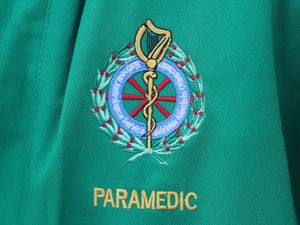Care home staff vacancy rate almost doubled since April, says regulator
The Care Quality Commission warned last year of a ‘serious and deteriorating’ situation in terms of recruitment and staff retention in the sector.

More than one in 10 care home staff positions in England were unfilled at the end of 2021, figures suggest.
The staff vacancy rate “continued to steadily increase” throughout last year to reach 11.5% at the end of December, the Care Quality Commission (CQC) said.
This is almost double the 6% vacancy rate in April.
In the final quarter of the year, vacancies were highest in London (12.5%) and lowest in the North East and Yorkshire (9.5%).
The data is based on responses to the regulator between April 1 to December 31, concerning 8,260 services – around 54% of all residential adult social care services.
The CQC warned last year of a “serious and deteriorating” situation in terms of recruitment and staff retention in adult social care.
It said people were leaving the sector to work in hospitality and tourism as society reopened, and warned that others may take up vacant nursing posts in hospitals.
The situation has also been been compounded by the mandatory vaccination requirement for care home staff, which came into force in mid-November.
The Government has provided extra funding, launched a campaign to improve recruitment and retention, and expanded the Health and Care Worker visa scheme.
It comes as the National Care Forum called for a “system-wide approach to planning and delivering staffing levels”.
Research published by the membership organisation for not-for-profit providers last week found that 43% of care home members who responded were closed to new admissions due to staffing pressures exacerbated by the spread of Omicron.
Members reported an average vacancy rate of 18%, and said 14% of staff were unable to work because of Omicron on average.
Chief executive Vic Rayner said “This crisis has not been created by Omicron, rather the pandemic has exacerbated pressures caused by chronic underfunding and a lack of workforce planning that were years in the making.
“Ultimately, a workforce crisis in social care puts strain on the wider health and social care system, as well as other parts of the public sector. It is a sign of system-wide failure.”
The Independent Care Group, which represents providers in York and north Yorkshire, said it was working with North Yorkshire County Council’s Make Care Matter campaign to boost numbers.
Chairman Mike Padgham said: “The shortage of staff in the social care sector is becoming critical and we are pleased to work with the county council and support its campaign to bring more people into this very rewarding, vital service.
“The name of the campaign says it all, as care does matter, very, very much. We have to work together to bring more people into this wonderful sector and to persuade the Government that it needs to support the sector more.”
Earlier this month, Mr Padgham wrote to the Health Secretary calling for an emergency volunteer army for social care amid fears that providers could run out of staff.
He said the Government should appeal for retired nurses, doctors, and carers to come forward for checks and training so they could help struggling social care services.
He added: “Until the Government provides more funding for care, we will always have issues with recruiting staff into the profession – it is time they got the recognition, respect and reward they deserve.”
A Department of Health and Social Care spokesman said: “Care staff are working incredibly hard, and to strengthen the workforce we have provided £462.5 million for recruitment and retention, expanded the Health and Care Visa scheme, and are running our Made with Care recruitment campaign.
“We have invested a further £478 million to support safe and timely hospital discharges to get patients into the best place for their care and support to continue.”





